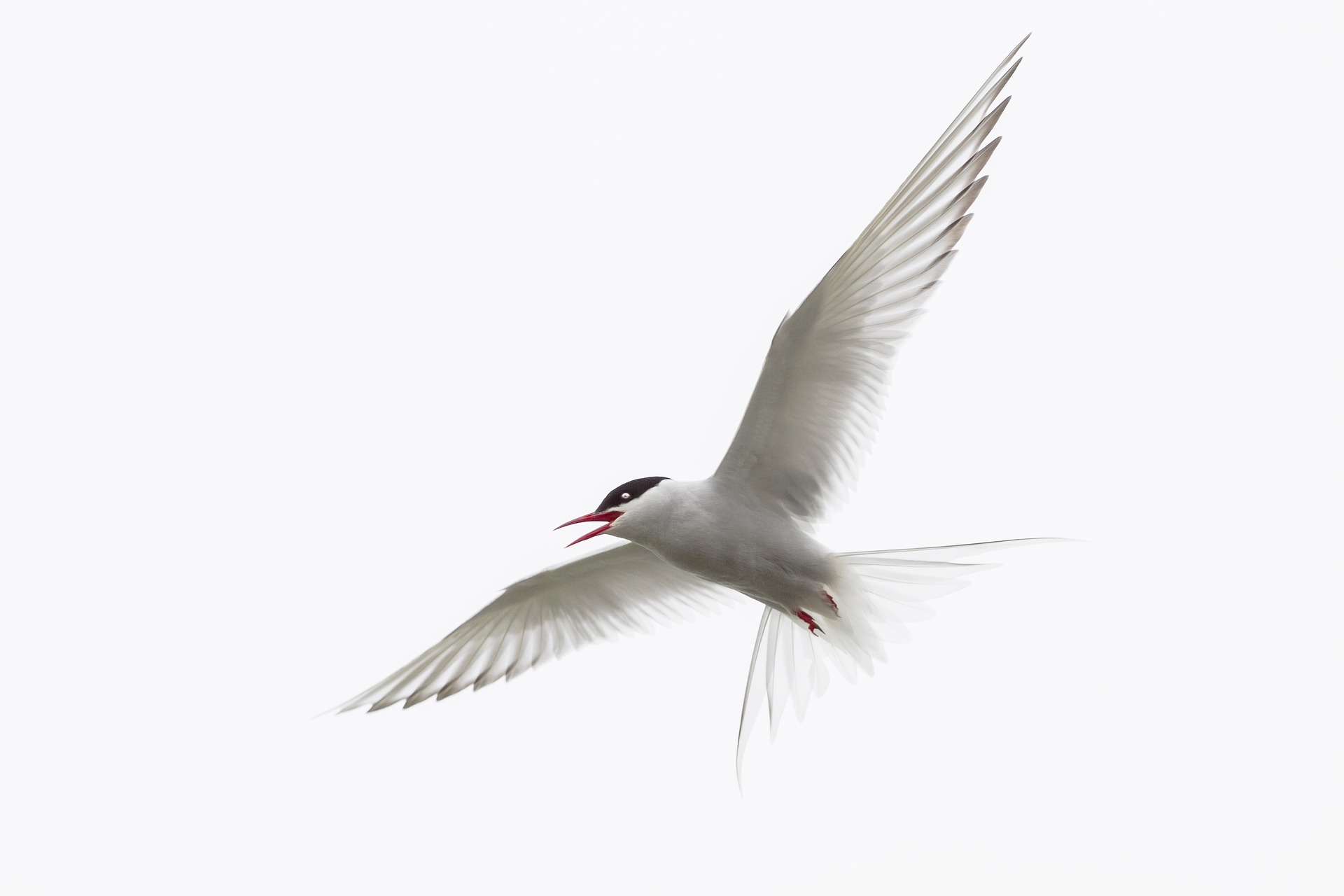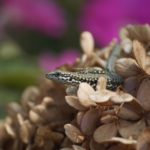There are so many mythical creatures throughout the world!
Today we’re looking at seven different kinds of mythical birds that may be often overlooked. Writing prompts are included just for added fun and to get the creative sparks flying! 🙂
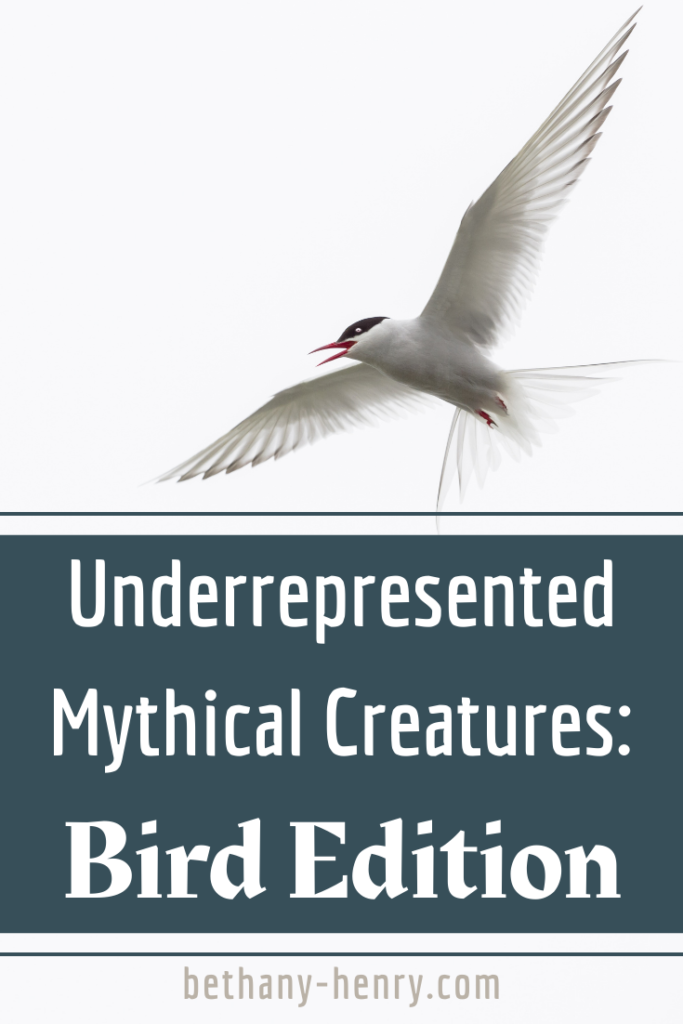
Note: As with most myths and folklore, the information about these creatures is varied and hard to pin down. Most of what I’ve gathered and condensed here is information from Wikipedia, MythOrTruth.com, Ancient Origins, and Brittanica.com.
Beyond my notes, I’d encourage you to research further! There is a wealth of material to be found.
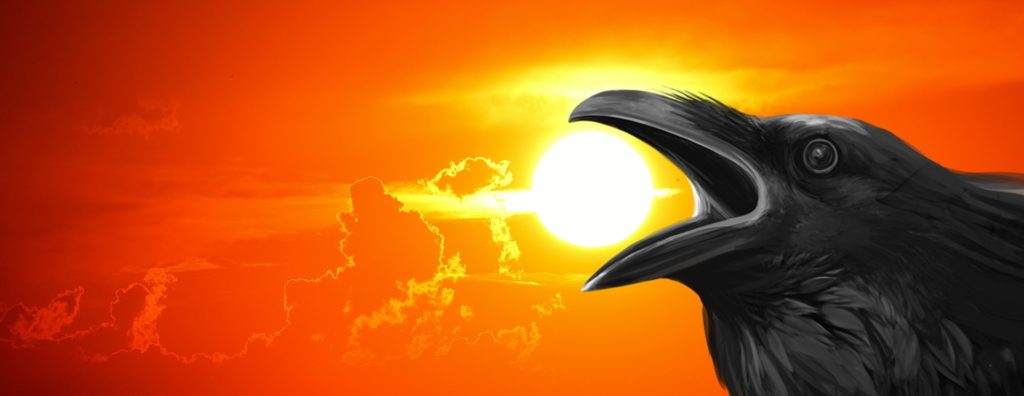
Three Legged Crow
Also called Sanzuwu, Golden Crow, or Jīnwū.
The Three Legged Crow is found in many myths of East Asia. It represents the sun and is sometimes considered to live there. It may also have powers of divine intervention, be involved in the creation of the world, or play a messenger role.
The crow itself can be found in myths across the world, often playing a trickster role portraying high levels of wit and charm.
Writing prompt: What if there was a whole family of Three Legged Crows? What if the Three Legged Crow was actually very serious but has somehow taken the blame for others’ tricks? What if the Three Legged Crow decided to live somewhere else instead of the sun for a change?
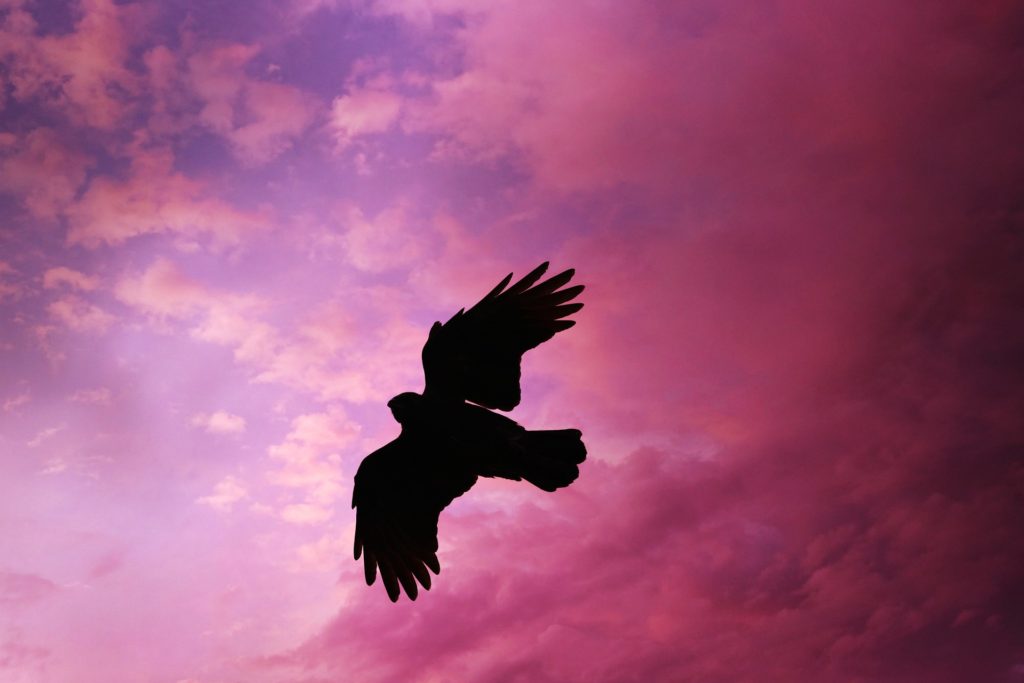
Huma
Also called Homa.
The Huma bird is found in Iranian mythology. It lives its entire life flying invisibly above the earth without ever landing and may not posses any legs. Just to touch or see its shadow is believed to be lucky and related to gaining fortune. It may be involved in bestowing kingship. Conversely, to harm or kill a Huma bird brings bad fortune such as death in 40 days. The Huma contains both male and female components in one body.
Writing prompt: What if a Huma bird did not realize it was invisible? Or did not understand why everyone thought it was lucky? What if someone injured a Huma bird by accident and then needed to make atonement in order to break their bad fortune?
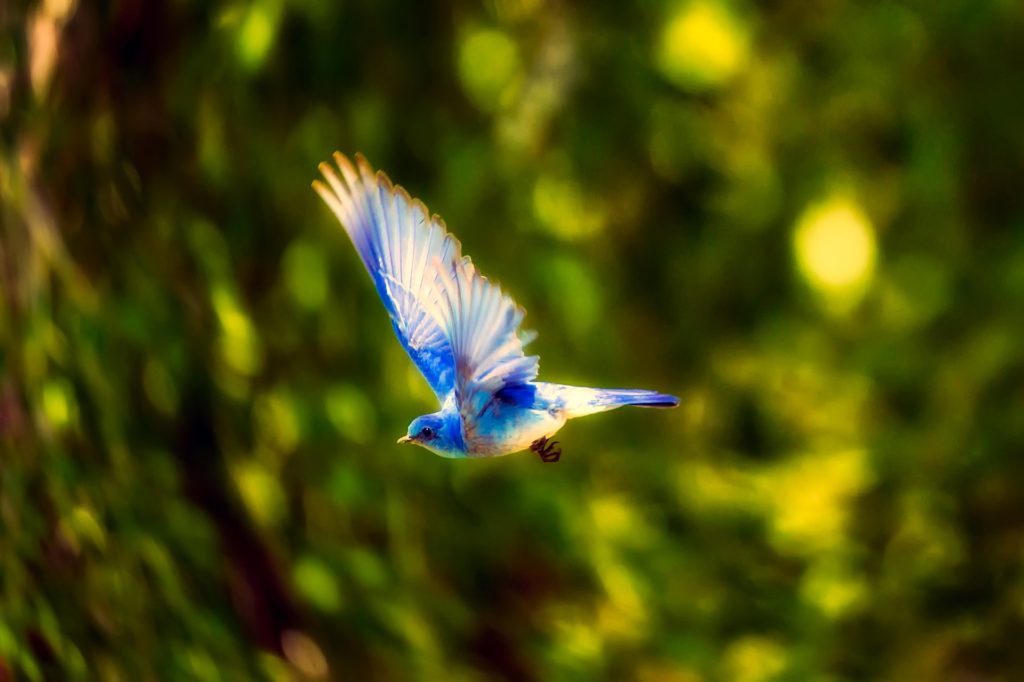
Oozlum
Also called Ouzelum.
The Oozlum bird is found in Australian and British myth and is known for its ridiculous behavior. It is said to fly backwards to it can admire its tail feathers, or possibly to see where its been. It is also said to fly in smaller and smaller circles until it somehow flies up inside of itself, thus disappearing.
Writing prompt: What if an Oozlum bird ‘s tail feathers were marred somehow and they needed to make them pretty again? What if an Oozlum bird was bad at flying in circles? What if an Oozlum bird had to learn proper “Oozlum” behavior?
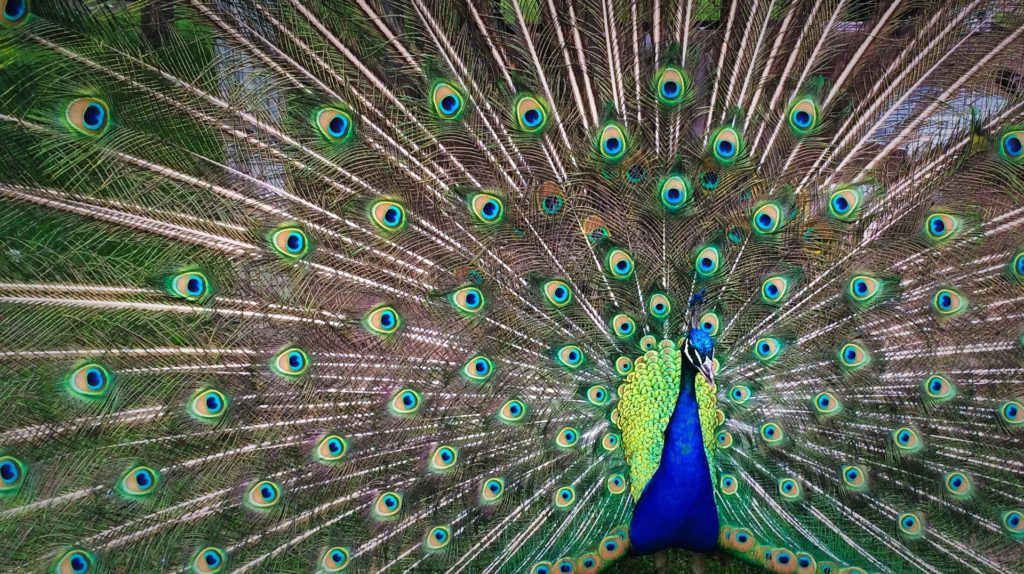
Konrul
Also called Kongrul or Konqrul.
The Konrul bird is found in Turkish mythology and is similar to the more well-known pheonix in that it is reborn after it dies. The Konrul is large enough to carry an elephant and it resembles a peacock. It lives in locations near water and has a hatred of snakes.
Writing prompt: What if a Konrul and a snake became friends? What if a Konrul was stranded away from water? What would a Konrul think if they met the less-magical peacock bird?
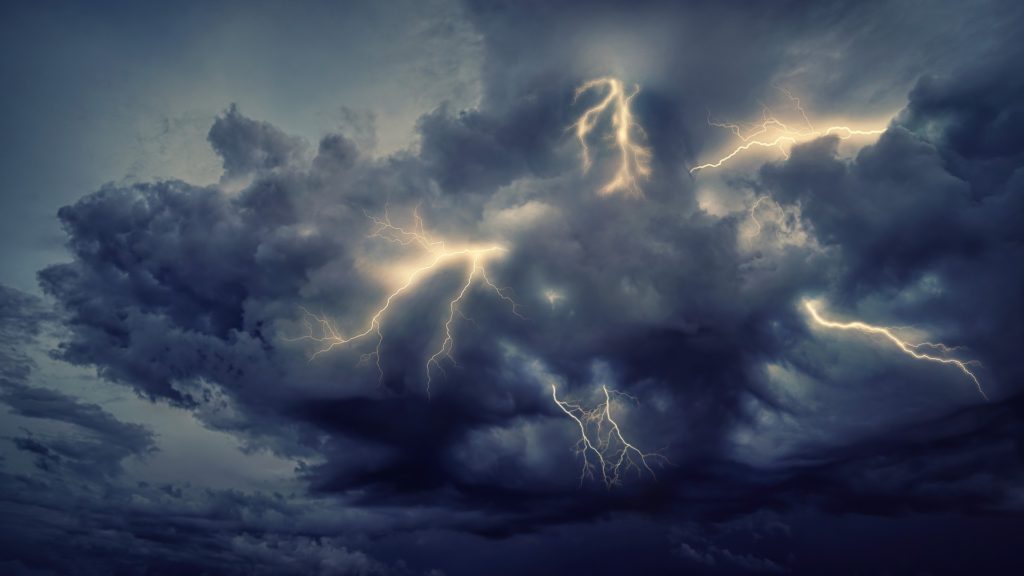
Thunderbird
Thunderbirds are found in Native American mythology. They are giant birds that embody power and strength and can protect humans from evil spirits. They can create thunder by the flapping of their wings and shoot lightning from their eyes.
Writing prompt: What if a Thunderbird was afraid of storms? What if there was a non-giant Thunderbird? What if a Thunderbird was tired of protecting humans?
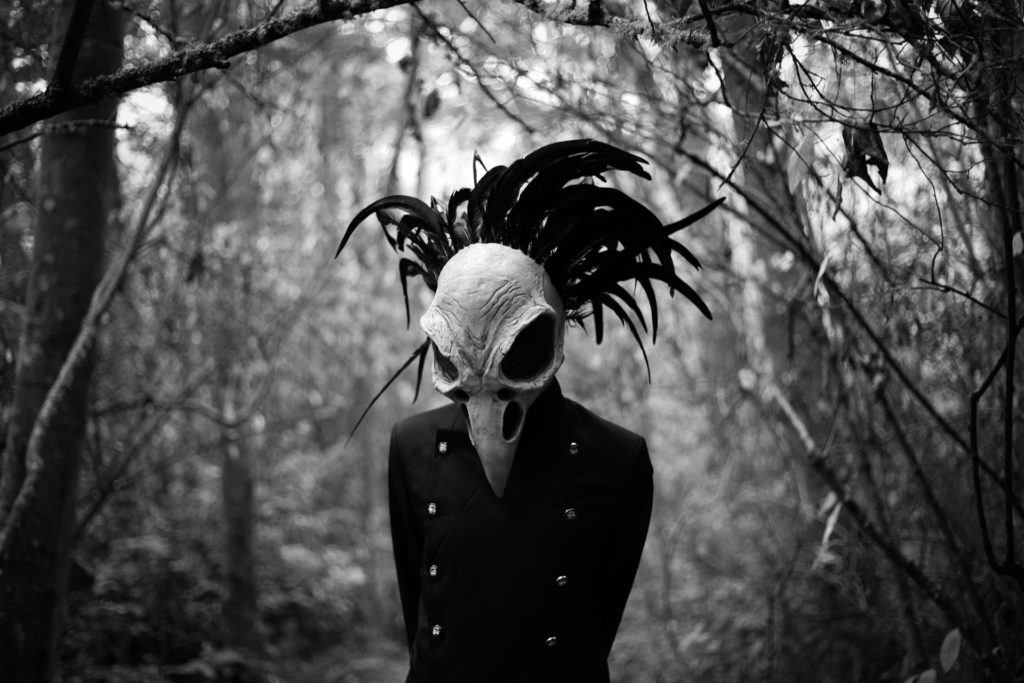
Itsumade
The Itsumade are a type of “eerie bird” found in Japanese myth. They have the body of a snake with wings, terrible claws, and the face of a human with a bird’s beak. Itsumade appear after disasters and suffering, such as after a battle or plague where many have died, and the birds cry out “itsumade, itsumade?” over and over again in a terrible voice. “Itsumade” means “until when?” and is a way of asking how long will the suffering last.
Writing prompt: What if an Itsumade had no concept of time? What if an Itsumade cried out for less-serious issues, such as dropped ice cream cones or skinned knees? Where does the Itsumade live when they are not at the site of disasters?
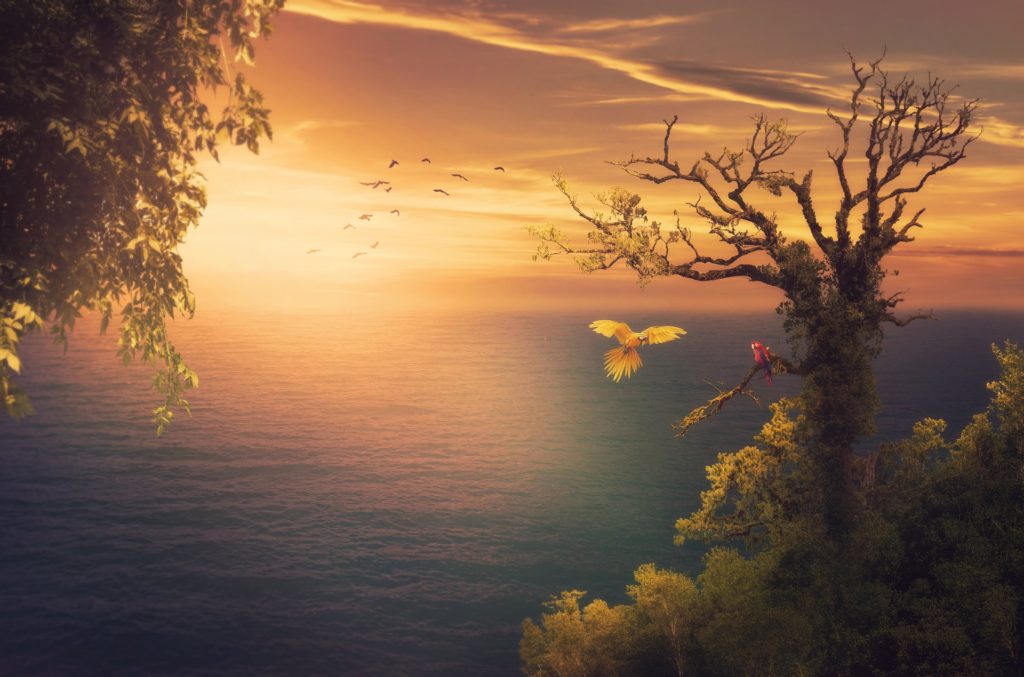
Adarna
Also called Aderna.
The Adarna bird is the namesake mythical bird from the Filipino story Ibong Adarna in which the bird is sought after for its magical powers. The Adarna bird has the ability to sing seven songs of enchantment and can put people to sleep, turn objects to stone, or perform miraculous healing. The bird is stunningly beautiful and roosts on a golden tree.
Writing prompt: What if the Adarna bird knew more than seven songs? What if the Adarna bird’s magical songs were sometimes defective? What if the Adarna bird wanted to learn a different type of magic?

